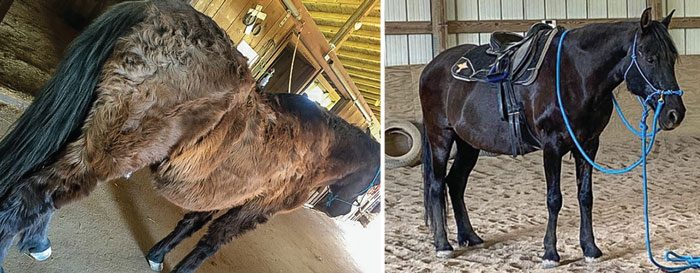American Farriers Journal
American Farriers Journal is the “hands-on” magazine for professional farriers, equine veterinarians and horse care product and service buyers.

Relevante displays hypertrichosis, or long hair coat, which is often a clinical sign of pituitary pars intermedia dysfunction (PPID). Following treatment, Relevante coat returns to normal. Photo by: ECIR
It wasn’t that long ago that a diagnosis of Cushing’s disease — Pituitary Pars Intermedia Dysfunction (PPID) — was felt to mean the horse had less than 5 years to live. The cause of the laminitis in these horses was poorly understood and, therefore, poorly managed. We know better now
The Equine Cushing’s and Insulin Resistance Group was founded in 1999 by an owner with an atypical Cushing’s mare who wanted to promote the dissemination of correct scientific information. We have followed the research closely, as well as thousands of cases. I can’t think of any situation where it’s more critical for owner, veterinarian and hoof-care professional to be fully informed and working together than in laminitis care.
We often describe the newly diagnosed laminitic horse as “acute.” What does acute laminitis mean?
With the possible exception of laminitis of pregnancy, few endocrinopathic laminitis (EL) cases are truly acute, where acute means the day before they were normal and the next they were in obvious laminitis. With endocrinopathy, laminitis can be the culminating event at the end of a long road.
It has been 20 years since P.J. Johnson first described occult changes to the laminae of horses with insulin resistance (IR), meaning no obvious clinical symptoms or none reported. Originally ascribed to cortisol excess (pre-Cushing’s; peripheral Cushing’s), this form of laminitis is now understood to be an insulin effect.
“We believe that conditions associated with glucocorticoid (GC) excess (exogenous or endogenous) and IR lead to structural changes…